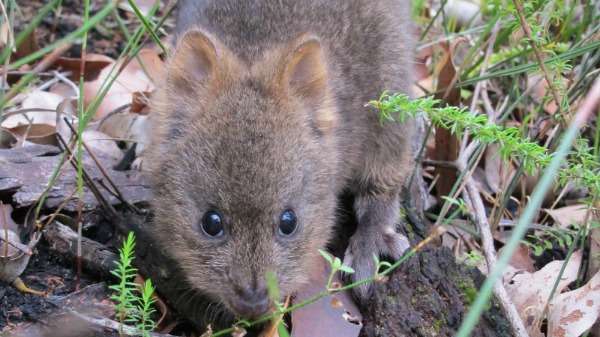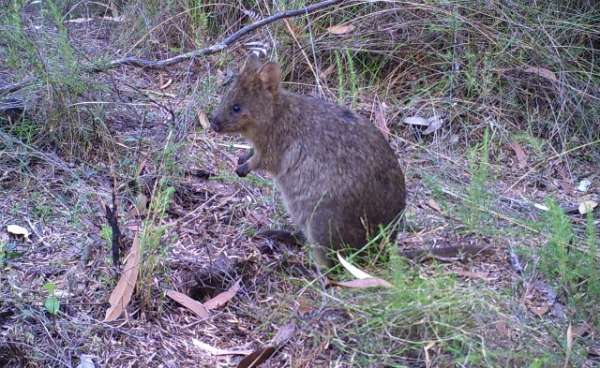Breakthrough in southern quokka conservation

Quokkas (Setonix brachyurus) in the southern forests between Nannup and Denmark are partial to different habitats to their cousins in the northern jarrah forests, highlighting the need for tailored conservation techniques in southern Western Australia.
If only the habitat preferences of northern quokkas was considered in attempts to conserve the southern population, conservation efforts could inadvertently damage southern populations by altering their preferred habitat.
Wildlife ecologist Karlene Bain and her team surveyed 327 sites for the presence or absence of quokkas and collected information on which habitat types quokkas preferred.
They discovered that quokkas in the southern forests prefer habitats with multiple vegetation layers for shelter and protection from predators, a low density of woody debris on the forest floor to enable freedom of movement, and a diverse habitat for feeding and shelter opportunities.
In contrast, previous studies in the northern jarrah forest showed these quokkas prefer a habitat with a dense understorey, vegetation that has experienced less than 10 years since fire and where baiting has occurred to target introduced foxes, minimising predation.
These variables are not important in the south.
Due to the difference in habitat between the northern and southern forests, researchers are required to apply a range of different techniques to monitor quokka health and population numbers

"A dense understorey is characteristic across the landscape in the southern forest and so is not a feature that can easily differentiate habitat patches here," Ms Bain says.
As the southern forest contains moister and more stable ecosystems with very different responses to fire and different patterns of growth and ageing, the use of time since fire is challenging to apply as a predictor of suitable habitat here.
"In addition, baiting for foxes has been applied throughout the southern forest consistently since commencement of baiting. Use of baiting intensity as a predictor of [quokka] occupancy is also subsequently meaningless in this region."
Given the differences in preferred living conditions, the study highlights the risks of applying conservation efforts to a species based on information obtained from a different area.
Conservation managers need to ensure they are encouraging vegetation growth that suits quokkas in the region where they occur.
"Where variables are not transferrable between regions, this can result in significant sources of error that can undermine the effectiveness of conservation efforts," Ms Bain says.
Provided by Science Network WA
This article first appeared on ScienceNetwork Western Australia a science news website based at Scitech.



















